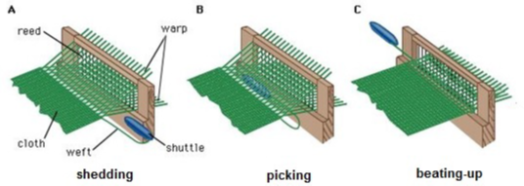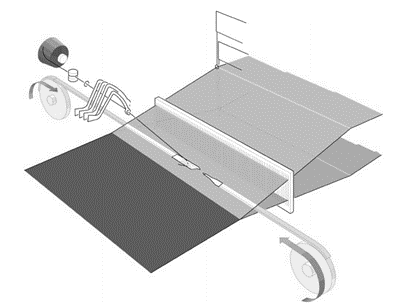Probleemstelling:
Picanol, based in Ieper, is one of the world leaders in developing and manufacturing weaving looms. There are many different types but they all work according to the same three-stage process: first the longitudinal threads are separated (shedding), then a lateral thread called the weft is propelled through the created passage (picking), and finally the weft is pushed against the woven cloth (beating-up). In the image below this process is depicted for a classic shuttle weaving loom.

Figure 1 Three basic weaving steps for a classic shuttle weaving loom.
The disadvantage of this type of weaving loom is that the production speed is limited, due to the acceleration and deceleration of the shuttle. A rapier weaving loom, on the other hand, can reach much higher production speed and is very flexible in type of cloth it can weave as opposed to other variants.
This type of weaving loom uses large sword-like metal needles, called rapiers, to carry the weft across the fabric. To save space, these rapiers are coiled upon a drum, as shown in Figure 2. Consequently, the bearing of this drum is subjected to a heavy oscillatory loading as it rotates back and forth multiple times per second. In steady operating conditions, a lubrication film is build up between the raceway and rolling elements preventing direct contact and avoiding high friction values and wear. However, due to the oscillation, the lubricant film has to be recreated every time the rotational direction changes. Gaining understanding in the lubrication process is essential to improve this vital component of the rapier weaving loom in terms of service life and operation.

Figure 2 Twin flexible rapier weaving loom. Source: Sulzer Textil.

Figure 3 Cylinder roller bearing.